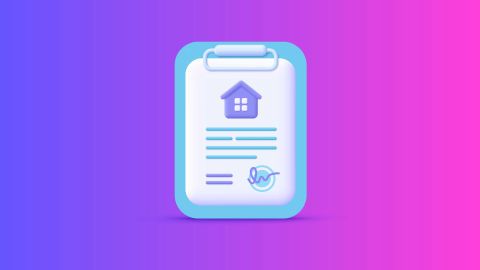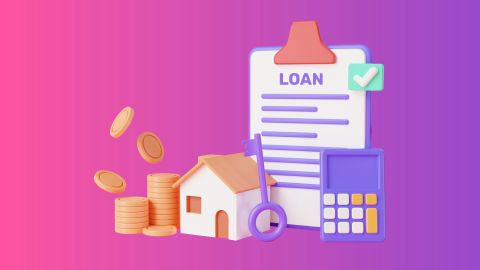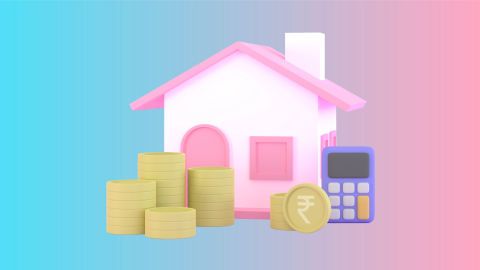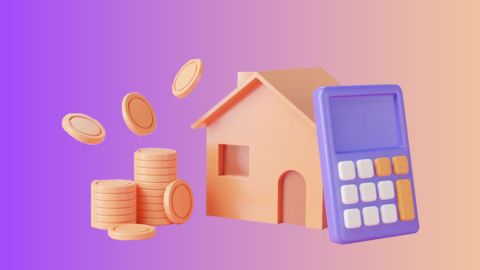House Rent Allowance (HRA) is a crucial component of a salaried individual's income. It is designed to provide tax relief to employees who live in rented accommodation. Understanding how to maximise the benefits of HRA rebate in income tax can significantly reduce your tax liability. This article will delve into the nuances of House Rent Allowance rebate, how to calculate it, and other financial products that can help optimise your tax planning.
What is HRA?
HRA, or House Rent Allowance, is a component of an employee's salary specifically allocated for rent expenses. This allowance helps salaried individuals meet their rental expenses and also offers tax benefits under the Income Tax Act, 1961.
Eligibility for HRA rebate
To claim HRA rebate, the following conditions must be met:
- You must be a salaried employee receiving HRA as part of your salary package.
- You must live in rented accommodation.
- You must provide proof of rent payment.
Calculation of HRA exemption
The HRA exemption is calculated based on the following criteria:
- Actual HRA received.
- 50% of the basic salary for those living in metro cities or 40% for those living in non-metro cities.
- Rent paid minus 10% of the basic salary.
- The least of these amounts is allowed as HRA exemption.
For example:
Consider an individual with the following details:
- Basic salary: Rs. 40,000 per month
- HRA received: Rs. 20,000 per month
- Rent paid: Rs. 15,000 per month
- Residing in a non-metro city
The HRA exemption calculation would be:
- Actual HRA received: Rs. 20,000
- 40% of basic salary: 0.40 * Rs. 40,000 = Rs. 16,000
- Rent paid minus 10% of basic salary: Rs. 15,000 - (0.10 * Rs. 40,000) = Rs. 15,000 - Rs. 4,000 = Rs. 11,000
The least of the above values is Rs. 11,000, which is the exempt portion of the HRA. The remaining HRA (Rs. 20,000 - Rs. 11,000 = Rs. 9,000) will be taxable.
Home loan and HRA
If you have a home loan and still reside in a rented house, you can claim both HRA and home loan benefits. For example, if you own a house in another city and live in a rented accommodation due to work, you can claim HRA for the rented house and tax benefits on home loan interest for the house you own.
One of the most significant financial products for tax savings is a home loan. The principal repayment qualifies for deduction under Section 80C up to Rs. 1.5 lakh, and the interest paid on the home loan is deductible up to Rs. 2 lakh under Section 24(b). Combining HRA with home loan benefits can significantly reduce your taxable income.
Bajaj Housing Finance offers attractive home loan options with competitive interest rates and flexible repayment terms. Here are a few reasons why you should opt for a home loan from Bajaj Housing Finance:
- Minimal documentation: Simplified application process.
- Quick processing: Fast approval and disbursal.
- Long repayment tenure: Options to choose a tenure that suits your repayment capacity.
Maximising tax benefits
- Health insurance: Under Section 80D, premiums paid for health insurance policies are deductible. For AY 2024-25, the deduction limit is Rs. 25,000 for self, spouse, and children, and an additional Rs. 25,000 for parents (Rs. 50,000 if parents are senior citizens). Investing in a comprehensive health insurance plan can provide both health security and tax benefits.
- National Pension Scheme (NPS): Contributions to the NPS are eligible for additional deductions under Section 80CCD(1B) up to Rs. 50,000. This deduction is over and above the Section 80C limit of Rs. 1.5 lakh. NPS not only helps in tax savings but also in building a substantial retirement corpus.
- Tax-saving Fixed Deposits (FDs): Tax-saving fixed deposits, under Section 80C, offer a lock-in period of five years and a maximum deduction of Rs. 1.5 lakh. These FDs can be a stable investment option, providing both returns and tax benefits.
Common Mistakes to Avoid
Always keep proof of rent payment, such as bank statements or rent receipts. Cash payments without receipts can lead to disallowance of HRA claims during tax scrutiny.
If there is a change in the rent amount during the year, update your employer and ensure that the new rent is reflected in your HRA claim. Failing to do so can lead to discrepancies and potential tax issues.
Also, many taxpayers overlook the opportunity to claim both HRA and home loan benefits. Ensure you evaluate your situation and take advantage of all possible deductions.
Documentation and compliance
- Rent receipts: To claim HRA exemption, it is imperative to maintain proper documentation. Rent receipts are essential proofs of rent payment. Ensure that the rent receipts include details such as the landlord's name, address, rent amount, and the period for which the rent is paid.
- PAN of landlord: If the annual rent exceeds Rs. 1 lakh, it is mandatory to provide the landlord's PAN to claim HRA exemption. In the absence of the PAN, a declaration from the landlord may be required.
- Rental agreement: A formal rental agreement acts as a legal document that substantiates the rental arrangement. Ensure that the rental agreement is updated and reflects the actual terms of the rent payment.
Maximising HRA rebate in income tax requires careful planning and thorough understanding of the applicable rules. By leveraging the benefits of HRA along with other financial products like home loans from Bajaj Housing Finance, health insurance, and NPS, salaried individuals can significantly reduce their tax burden and optimise their financial planning.




